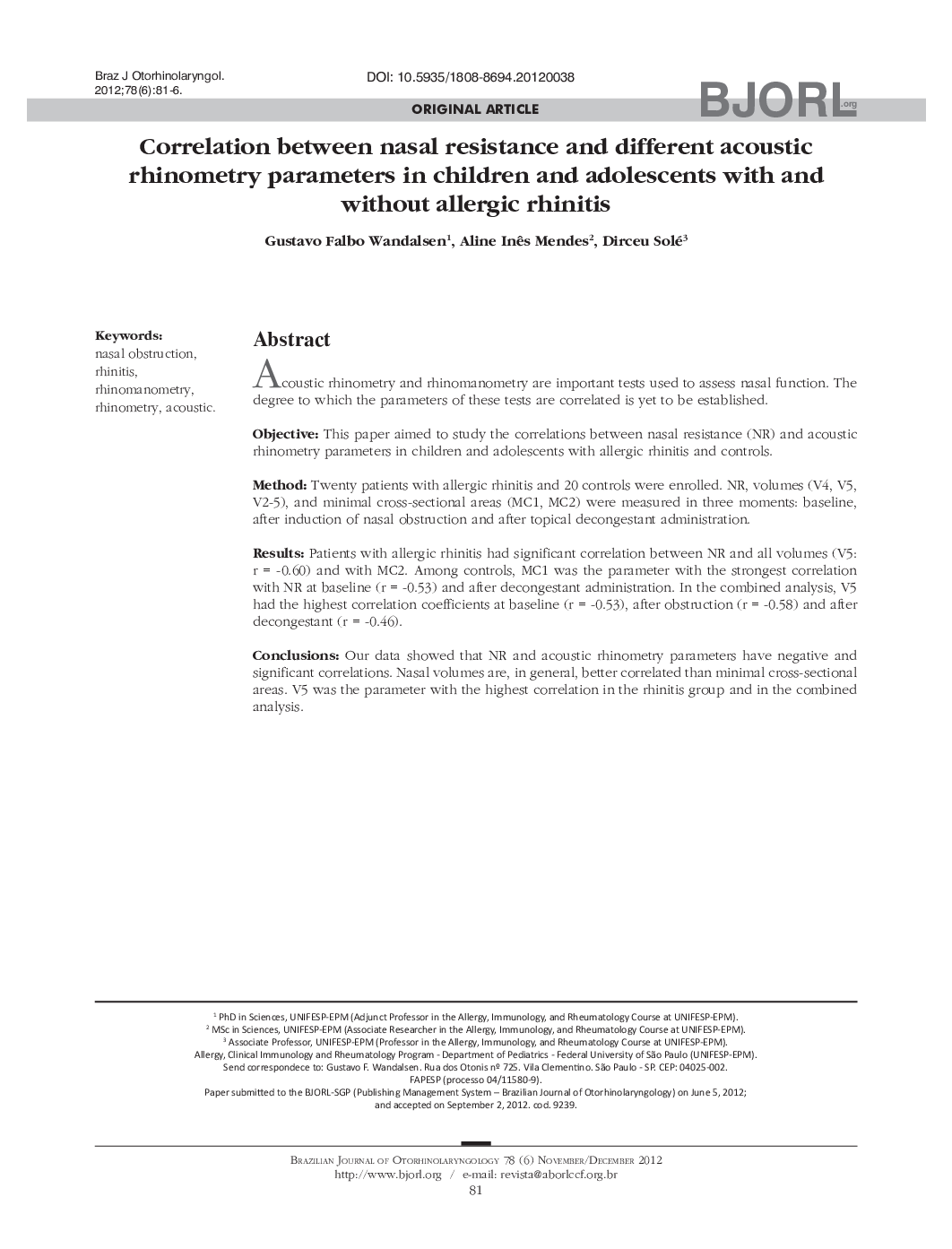| Article ID | Journal | Published Year | Pages | File Type |
|---|---|---|---|---|
| 4107059 | Brazilian Journal of Otorhinolaryngology | 2012 | 6 Pages |
Acoustic rhinometry and rhinomanometry are important tests used to assess nasal function. The degree to which the parameters of these tests are correlated is yet to be established.ObjectiveThis paper aimed to study the correlations between nasal resistance (NR) and acoustic rhinometry parameters in children and adolescents with allergic rhinitis and controls.MethodTwenty patients with allergic rhinitis and 20 controls were enrolled. NR, volumes (V4, V5, V2-5), and minimal cross-sectional areas (MC1, MC2) were measured in three moments: baseline, after induction of nasal obstruction and after topical decongestant administration.ResultsPatients with allergic rhinitis had significant correlation between NR and all volumes (V5: r = -0.60) and with MC2. Among controls, MC1 was the parameter with the strongest correlation with NR at baseline (r = -0.53) and after decongestant administration. In the combined analysis, V5 had the highest correlation coefficients at baseline (r = -0.53), after obstruction (r = -0.58) and after decongestant (r = -0.46).ConclusionsOur data showed that NR and acoustic rhinometry parameters have negative and significant correlations. Nasal volumes are, in general, better correlated than minimal cross-sectional areas. V5 was the parameter with the highest correlation in the rhinitis group and in the combined analysis.
